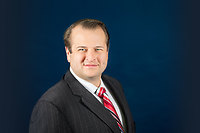On November 8, 2023, the Supreme Court of Appeals of West Virginia issued an opinion in the case of Westfield Insurance Company v. Sistersville Tank Works, Inc., et al., No. 22-848, 2023 WL 7391646 (W. Va. Nov. 8, 2023), adopting the continuous-trigger theory to determine when a bodily injury occurs to trigger insurance coverage under an ambiguous, occurrence-based CGL policy. By adopting the continuous-trigger theory, every occurrence-based policy in effect from the initial exposure, through the latency and development period, and up to the manifestation of the bodily injury, sickness, or disease, is triggered and must provide coverage for the claim.
This case arose from a certified question from the Fourth Circuit Court of Appeals, as to what trigger theory West Virginia law recognized on insurance policies. The Court of Appeals acknowledged that the Supreme Court of Appeals of West Virginia had never answered this issue, so it certified the following question: “[a]t what point in time does bodily injury occur to trigger insurance coverage for claims stemming from chemical exposure or other analogous harm that contributed to the development of a latent illness?”
The two competing theories were the continuous-trigger theory and the manifestation-trigger theory. Under the continuous-trigger theory, when a claim is made alleging a hidden or progressive injury caused by chemical exposure or other analogous harm, every occurrence-based policy in effect from the initial exposure, through the latency and development period, and up to the manifestation of the bodily injury, sickness, or disease, is triggered and must cover the claim. Under the manifestation-trigger theory, the policy would only cover injuries that were diagnosed, discovered, or manifested while the policy was in effect.
This Court adopted the continuous-trigger theory and held that, “[a] continuous-trigger theory applies to determine when coverage is activated under the insuring agreement of an occurrence-based CGL policy if the policy is ambiguous as to when coverage is triggered.”
The Court’s decision was supported by the history of the standard CGL policy where the policy’s drafters rejected the manifestation-trigger theory, and instead chose to cover “occurrences,” including injuries that took place over an extended period before becoming evident. This history showed that an occurrence-based, CGL policy incorporates a continuous-trigger theory.
This was a novel issue before the West Virginia Supreme Court of Appeals and could have a significant impact on the number of work-related exposure claims that exist or will be filed in West Virginia.
If you would like a copy of the Westfield decision or have any questions concerning its potential implications, please contact a member of Reminger’s Insurance Coverage Practice Group, or its West Virginia lawyers.
Attorneys
- Columbus
- Cincinnati
- Cleveland
- Lexington




